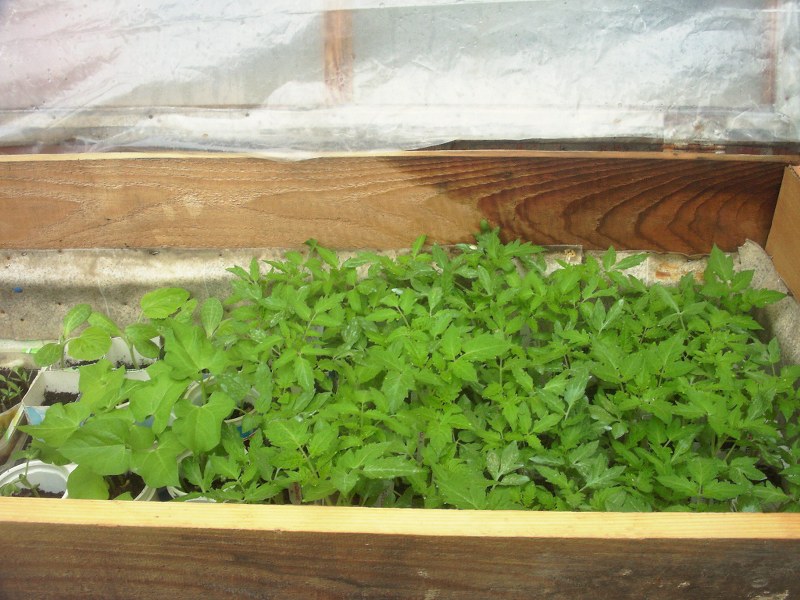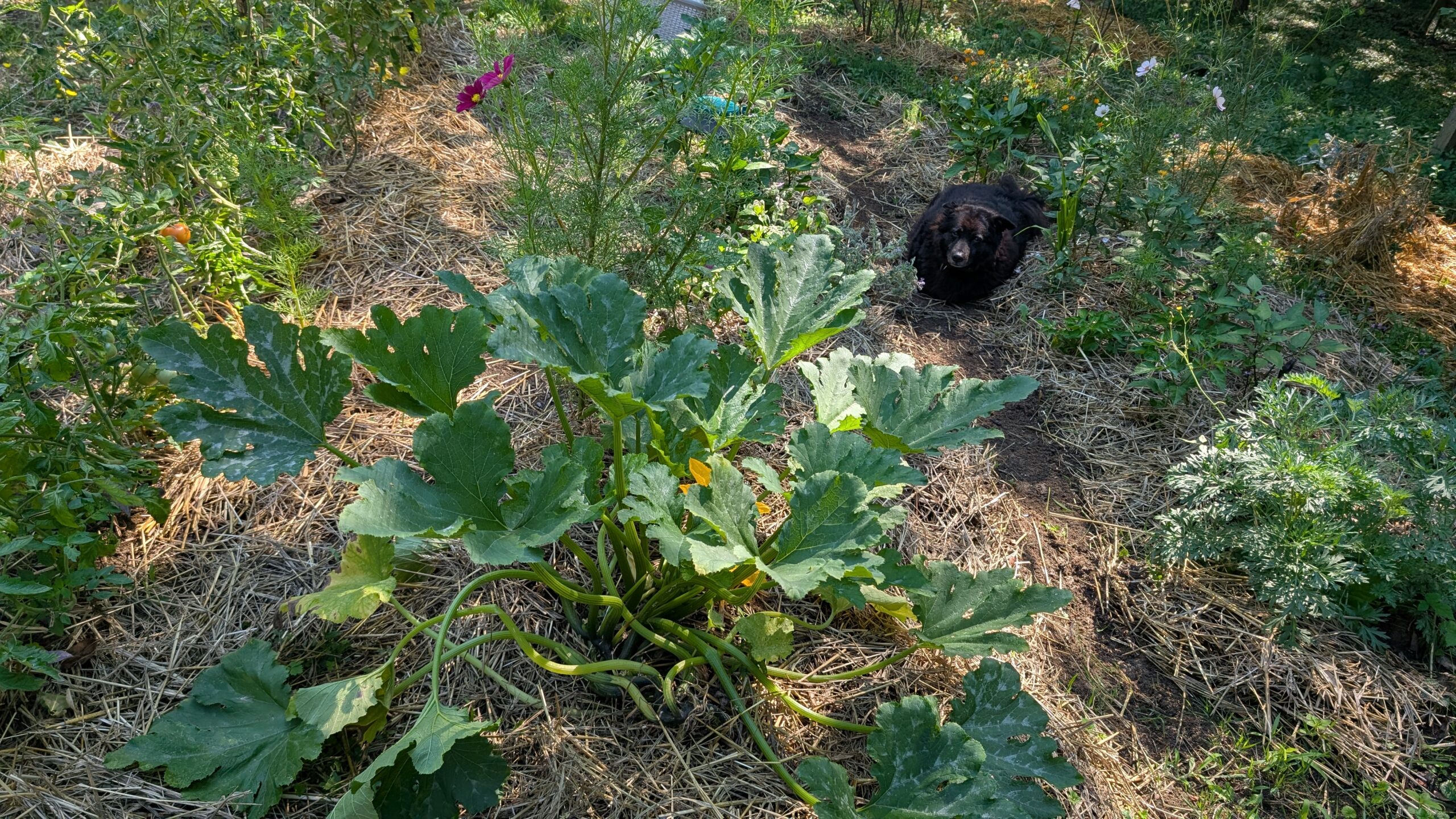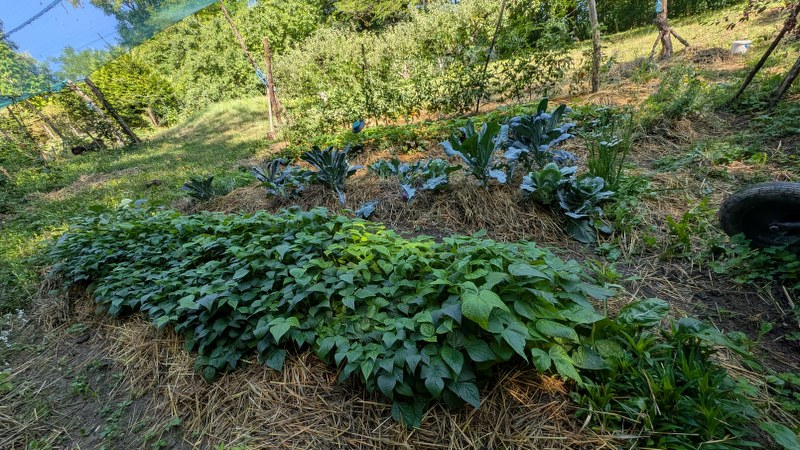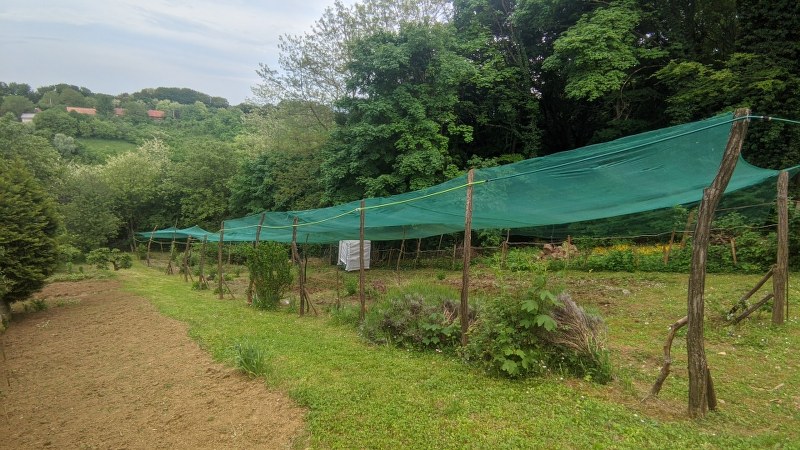One of the first vegetables that we start in spring is peppers and tomatoes. They take a lot longer to grow than most of the other vegetables. So, when is the right time to sow them, and how do we start them? I’ve tried many methods and growth times over the past 20 years. Here’s what I’ve learned

When is the perfect time to start your tomatoes?
Although we usually hear that the perfect time to sow tomatoes is 8-10 weeks before the last frost date, this is true only in perfect conditions and without bigger pot transplanting. Every transplant prolongs the growth time by a couple of days, especially if we grow them together and separate the seedlings later. If the tomatoes that we choose take 90 days till the harvest and we transplant them to bigger containers 2 times this will bring them closer to 100 or even 110 until ripe. Also, they will start flowering later, and in some hot areas, this can be a problem. Tomatoes start dropping flowers at temperatures above 30°C/85°F, so if we need the plants to flower before this kind of sheet we need to start them sooner.

Germination and growth can be prolonged by lack of temperature and light. Tomatoes need a temperature around 21-27°C(70-80°F). If we can’t give them this kind of temperature, they will germinate eventually, but this will take much more time. The germination period of 7-14 days can easily prolong to 20 days, which will set us back at least one week and the seedlings won’t be ready on time.
So, before deciding when we’ll sow our seeds we need to evaluate where the seedlings will be kept and how we’ll keep them. For anyone who doesn’t have perfect conditions, I’d recommend giving their seedlings at least 10-13 weeks.
Which seeds to use?
There are over 10,000 tomato varieties in the world. Choosing the right tomato seeds depends on our desires, garden size, and the area in which we live.
The size of the tomatoes will depend on the size or the area in which we plan to plant our tomatoes. We divide tomatoes into determinate and indeterminate varieties. Determinate varieties have the height limit they can reach and indeterminate ones grow as much as they want(or can). If we want to plant tomatoes in the garden we can choose any variety we like. If we want to plant them in small pots we’ll stick to determinate varieties, or even tiny(balcony) varieties. Although smaller, determinate tomatoes can produce the same amount of tomatoes as the tall ones.
The type and color of the tomatoes also depend on our desires and usage. If we need tomatoes for cooking we’ll choose the “meaty” varieties, salads will benefit from firm, smaller-sized varieties. Cherry tomato varieties will be perfect for eating fresh and drying for winter. Plum-shaped tomatoes will be perfect for tomato sauce or canning whole tomatoes. Choosing the right ones will give us a perfect harvest of the tomatoes that we need.

Another thing we need to be careful about is choosing the tomatoes that are right for our climate and the area in which we live. Some varieties don’t work well in very hot summers, while others thrive in drought and sun. Besides the general information, tomatoes usually state the country from which the variety originated, and this can be a great indicator of what kind of conditions the tomatoes prefer. Generally speaking, Russian tomatoes prefer colder weather, and are more prone to blossom drop due to the high temperatures, while for example Italian and Spanish varieties often prefer very sunny and droughty. Choosing the right variety will help us fight diseases to which some varieties are more prone or resistant. Italian tomatoes, for example, are usually very sensitive to late blight. If we live in a rainy area we’ll choose varieties from countries that get more rain than Italy. This will help us keep the plants healthy for a longer period.
Sowing together or separately?
Usually, when we read about tomato sowing we read that the instructions say “Sow two or three seeds to one container or pot”. But is this the only way to sow them? No. Tomatoes can be sown separately or together in one container and separated later. The main factor in choosing the way we’ll sow them is the space that we have available. I’ve tried many different ways of sowing. Sowing in separate small containers, sowing together in small containers, sowing in big containers, non-woven bags, sowing directly in a big box. All of these methods have their pros and cons.
If we have enough space the best way is to sow in a container big enough for one plant to spend the entire indoor growth time. The less transplanting and root disturbance the better. The problem is that when you have a lot of seedlings this can take a lot of space. Sowing into small separate containers and sowing into one small container is the same. The seedlings will after some time need to be transplanted into bigger pots, and every transplant prolongs the growth time.
Since I don’t have enough room to keep every plant in a separate container I’ve sown them this week all together and will transplant them later. But as you can notice I started my tomatoes 15 weeks before taking them in the garden. This is because I’m counting on at least 2 weeks of slow growth period after transplanting so I’m making sure they have enough time.

Which containers to use?
There are dozens of different containers and pots for tomatoes to choose from. Usually in the articles and videos, we can see professional seedling trays, jiffy pots, or seed blocks. These are all great but do they make a big difference in growth compared to any other container? No, they don’t.
Choose the container you personally prefer, it can be an expensive pot, a professional tray, or an old reused plastic container. It doesn’t matter as long as it works in your garden and house. I always use reused things like old milk containers, meat containers, and used coffee and yogurt cups. This works the best for me because they take up much less space than a big tray or round pot and also after usage I can throw them in our recycle plastic/metal/paper bins and the communal workers will collect them. In my garden, anything can be a pot or container.

Which soil to use?
When it comes to soil you can use almost any type of soil to grow tomatoes. The only thing you need to be careful about is that the soil needs to be well-drained, very fertile, and light so it doesn’t lump around the roots. Although I wouldn’t recommend it, you can actually grow tomatoes in plain garden soil, even in clay, but they will need a lot more fertilizers to grow and will take longer to grow to full size.
Usually, people will tell you to buy a good soil mix or a rich substrate, but I can tell you that you can grow tomatoes even in the cheapest potting soil available. Just fertilize your seedlings regularly and they won’t mind if the soil is not too rich. I’ve grown my tomatoes in special mixes, professional substrates, and cheap supermarket soil. Tomatoes grew in all of them. This year I bought peat soil for sowing.
How to sow?
Sowing tomatoes is simple and done like almost all other seeds. Fill the 2/3 of the container, spread the seeds around the container, and top the seeds with a finger thickness of soil. Spray some water on the soil or water the plate of the container and let the soil absorb the water. Do not overwater the soil. The soil should be moist but not wet. Water the soil as soon as it starts drying. You can also put a plastic bag over the container and seal it up to ensure the soil stays moist. Remember to remove the bag as soon as the seeds germinate.

If you use separate containers for each plant then you can fill the container and make a hole about half of the length of the finger and place 2-3 seeds inside the hole. Close the hole and water.
The seeds don’t need light to germinate. They need heat. The closer the temperature is to 27°C/80°F the faster they will germinate. Tomatoes can be kept in a completely dark but warm place to germinate faster. If you have a heater, furnace, or a warmer area in the house that’s away from the light, don’t be afraid to use it. Place your containers there and once you see the seeds germinated move them to the lighted area. Just remember to check them daily and move them as soon as they start growing. The seedlings will come out of the soil white, but as soon as you move them to the light they will turn green. If you keep them in the dark for too long they will become leggy, so remember to check them every day.
The right light and temperature
Tomatoes love the light, the more light they get the better they grow. Keep them on the window sill or directly under the growing lights. The only thing you need to remember is before moving the seedlings that were under the growing lights outside in the sun they will need a period to adjust. Place a light cloth, gauze, or agrotextile over them the first couple of days in the sun. The sudden change from growing lights and sun can burn their leaves.

When it comes to temperature tomatoes like it warm. 21-27°C(70-80°F). They will grow in lower temperatures, but much slower. Also, don’t let the temperature drop under 10°C/50°F or they will stop growing completely.
To thin or not to thin?
When we sow the tomatoes, the recommendation is to use 2-3 seeds per container. This is because not every seed will germinate, but if they do do we keep them all? Well, most will recommend cutting off the excess seedlings and leaving just one, but I consider this a matter of your own opinion and desire. I never thin out the tomato seeds and always plant 2-3 plants per container and hole. I have enough space for them to spread around and from what I’ve noticed the plants are much stronger when they are kept together on one pole than having one plant per pole.
Also since I’m pruning the tomatoes during the growth time and growing them on the wire lately, I can keep only one or two branches of each plant and remove all the excess branches later. I’ve been growing multiple plants together for decades and didn’t have any issues with it.

Fertilizing the seedlings
Seedling fertilizing will depend on the soil you’re using. If you buy rich fertilized substrate you probably won’t need to use additional fertilizers, while using the cheap supermarket soil will make you fertilize the seedlings almost every week. If you need to fertilize your seedlings just use one with a balanced amount of nitrogen, phosphorus, and potassium,(NPK) and your seedlings will be fine.
Transplanting the tomatoes
Tomatoes should be transplanted after the danger of the frost passes. That’s the main concern when transplanting. Morning temperatures should be above 10°C/50°F, but if the seedlings are too big or starting to turn yellow, they can be planted in the garden. They will stand still there until the temperatures reach above 10°C when they will start growing again. Temperatures under 2°C/35°F are a big no for tomatoes. They will freeze at these temperatures, and even if the temperature doesn’t drop under the freezing point they will still be damaged by the low temperatures.
If there is a sudden cold wave you can cover the tomatoes in thick agrotextile or place big glass bowls, jars, or plastic containers over the seedlings to keep them from getting damaged. Just remember to remove them as soon as the temperature rises. Tmato leaves turn yellow with purple discoloration when they are cold so that’s a good sign the soil is too cold. This is because they can’t take phosphorus from the soil. You can help them by warming them up and giving them additional phosphorus. Or if it’s for just a couple of days you can wait, as soon as it warms up the plant will change its color back to green.

Contrary to common belief, tomatoes aren’t that difficult to grow if you prepare them before growing. Choose the right variety, and soil, and give them enough light and warmth and they will give you a perfect harvest.





Leave a Reply